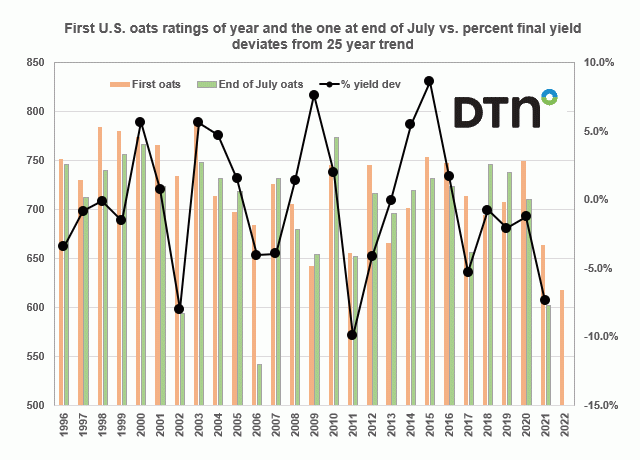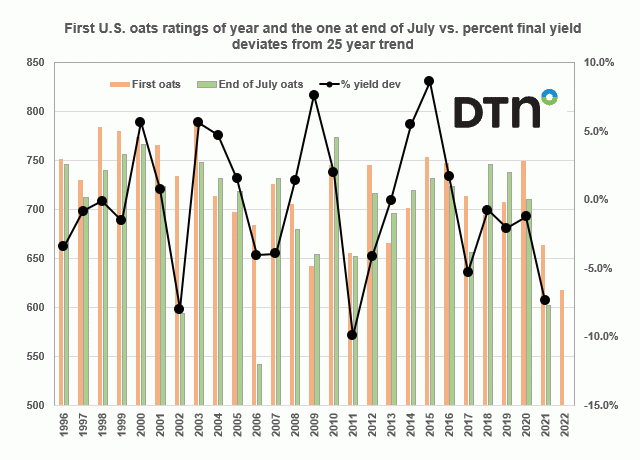Fundamentally Speaking
Slowest Oat Planting Progress Ever
We do not often talk about oats but in the past, it has been seen as a market leader and is one of the earliest crops to be planted.
As opposed to other members of the grain and oilseeds complex, it has been able to withstand some of the sharp selling pressure seen this week and that may be due to the very alarming outlook this early in the season for the U.S. 2022 oat crop.
Earlier this week the USDA released its first national oats condition report for the 2022 season and using our usual ratings system we weight the crop based on the percent in each category and assign that category a factor of 2 for very poor, 4 for poor, 6 for fair, 8 for good, and 10 for excellent and then sum the results.
P[L1] D[0x0] M[300x250] OOP[F] ADUNIT[] T[]
This graph plots the first oat crop rating of each year from 1996 to 2022 along with the rating seen the last week of July when the crop is well advanced and close to being harvested on the left-hand axis.
On the right-hand axis is the percent that the final oat yield of each season deviated from the 25-year trend.
This year's initial oat rating is 618 and that is in fact the lowest first crop rating of the year since national oat crop ratings started in 1996 and well below the year ago 664 which itself was the third worst initial crop rating.
Given that the bulk of oats are grown in the Upper Midwest and Northern Plains, the very cold and wet conditions in that part of the country for the past two months have set back seedings of a variety of crops such as corn, spring wheat, barley and sugarbeets in addition to oats, especially in North Dakota and Minnesota, and is likely the reason why the first crop ratings of the year are so poor.
As of May 23, 2022, just 77% of intended oat acreage was in the ground and again is the slowest planting pace as of May 22 since national oat progress reports started in 1996.
Interestingly last year's very low first initial crop rating was due to the opposite situation of very dry conditions seen right at the start of the 2021 growing season that worsened as the year went.
In fact, the end of July 2021 rating of 602 was the lowest for that point of the season other than seen in July 2006 due to the severe drought a year ago that resulted in final yields coming in 7.4% below trend, the third worst performance in 26 years.
Still there is a long way to go as the correlation between the first oat rating and the percent that final yields deviate from trend is only 16%, but that improves to 44% when using end of July crop ratings.
(c) Copyright 2022 DTN, LLC. All rights reserved.





Comments
To comment, please Log In or Join our Community .